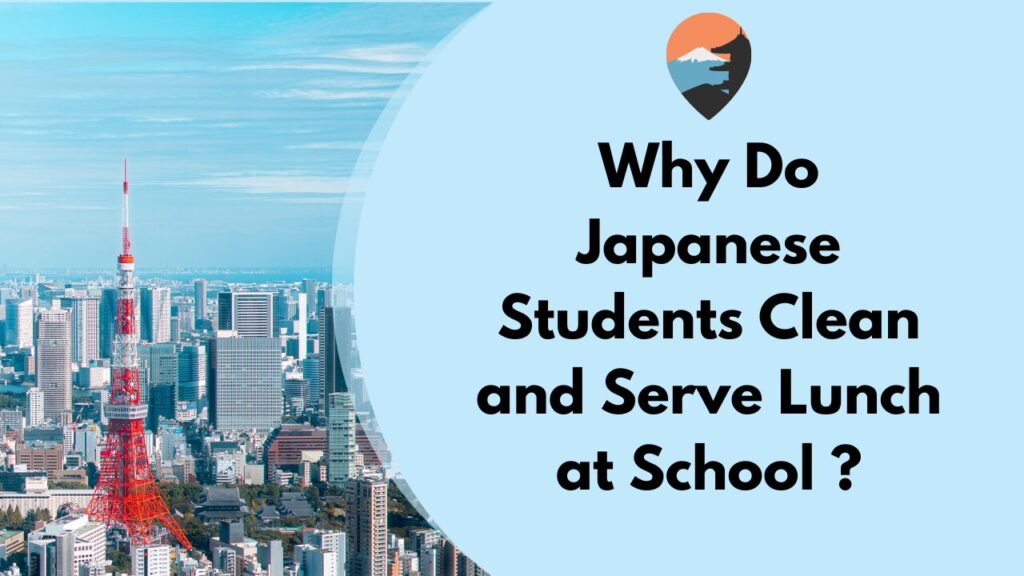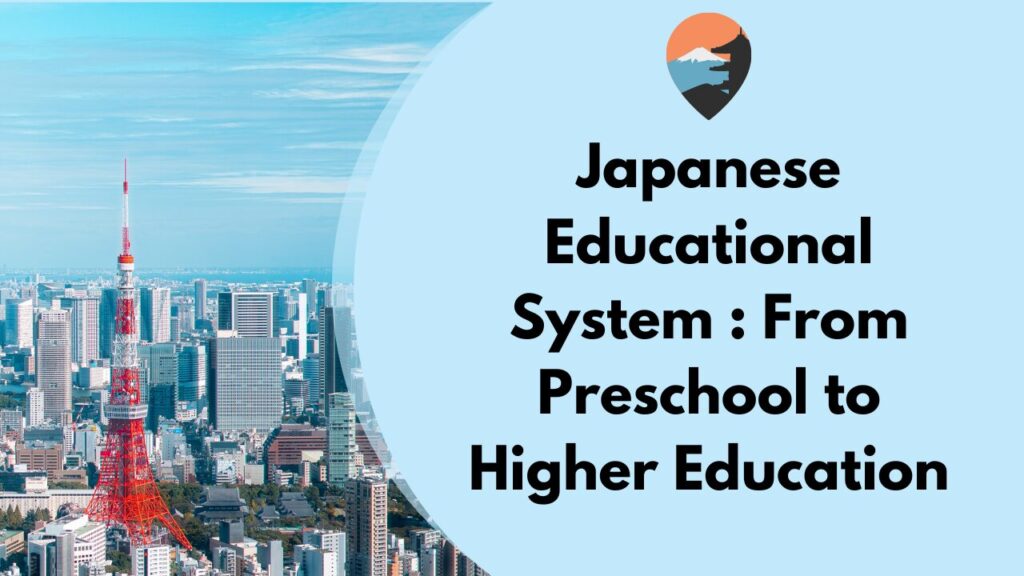Japanese tutoring schools, known as “juku” or “cram schools,” offer tailored academic support, exam preparation, and enrichment programs. From bolstering academic performance to navigating competitive entrance exams, discover how these specialized learning centres play a pivotal role in the educational landscape of Japan.
What types of tutoring schools are available in Japan?
There are 2 types and 2 ways of tutoring schools in Japan.
Types
1) Cram schools
They are tutoring centers that aim to help students understand their school classes and improve their exam grades. Their main goal is to align with the same topics and curriculum covered in students’ regular school classes. They aim to make learning fun and help students develop good study habits. Enrollment in a cram school is open to anyone seeking support to enhance their understanding of school subjects.
2) Entrance Exam Preparatory Schools
Entrance exam preparatory schools are learning centres that focus on helping students prepare for entrance exams to get into their desired schools. These schools often cover topics that go beyond what is taught in regular school and provide more challenging coursework. It’s important to understand that entrance exam preparatory schools have different classes that vary in difficulty and teaching speed. This means that students of all academic backgrounds can join these schools and do well in their studies.
In other words, both “cram schools” and “entrance exam preparatory schools” serve distinct purposes.
Ways
1) Group instruction

These cram schools follow a way where one instructor delivers instruction to a group of about 10 to several tens of students, following a planned curriculum.
Pros :
・Students can challenge and inspire each other
・It’s easier to increase motivation
・Students can receive high-quality lessons from professional instructors
Cons :
・It’s challenging to balance school club activities or other extracurricular activities due to the fixed curriculum
・Providing individualised attention is difficult because there are multiple students for each instructor
2) Individual instruction

These cram schools offer either “1–on–1 instruction,” where 1 instructor guides a single student, or instruction to very small groups of around 2 to 3 students.
Pros :
・It’s easy to balance with club activities/other extracurricular activities since it can be adjusted to fit your schedule
・Ease of asking questions when you don’t understand a problem
Cons :
・There is a risk of instruction being focused more on weaker subjects
・Monthly fees are higher than those of group instructions.
How many students go to cram schools in Japan?
In Japan’s school system, generally, it is necessary to take entrance exams when entering high school and university, regardless of whether they attend government or private schools. Instead of taking the entrance exam for entering high school, some students take the entrance exam when they enter junior high school to enter a combined school of junior and senior high school. Please see this article for more details about the Japanese school system.
According to the “FY2021 Children’s Study Expenses Survey” conducted by the Ministry of Education, Culture, Sports, Science and Technology, the number of households spending on cram schools (including entrance exam preparatory schools) is as below.
Elementary School
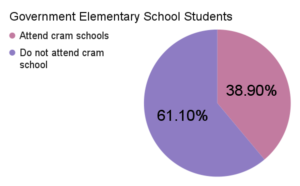
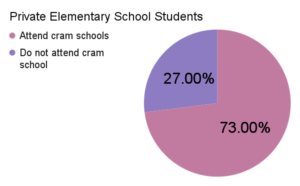
At private elementary schools, more than 70% of students attend cram schools in preparation for junior high school entrance exams.
Junior High School
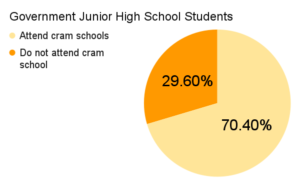
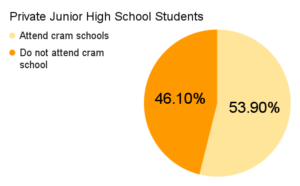
Similarly, more than 70% of public junior high schools attend cram schools in preparation for high school entrance exams.
High School
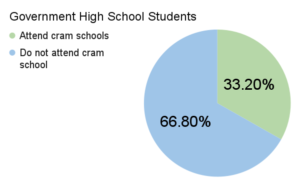
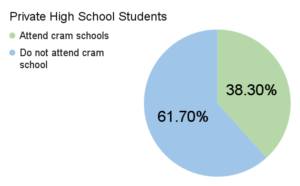
For high school students, the percentage is low because the survey included those who start working after graduation instead of going to universities (approximately 40%) .
Those who wish to go on to university prepare for the entrance exam by taking preparatory courses at schools, cram schools and entrance exam preparatory schools, or studying at home.
Why do students go to cram schools?
In the competitive world of education, many students seek additional support outside the classroom. A recent study by Studyplus shows why junior high and high school students attend cram schools and the factors influencing their decisions.
1) Junior high school students
Improving Academic Performance
Approximately 70% of junior high school students attend cram schools to enhance their academic performance. This shows the recognition of the importance of strong academic foundations.
Preparing for Entrance Exams
Around 53% of these students attend cram schools to prepare for entrance exams, highlighting their competitiveness.
2) High school students
Preparing for Entrance Exam
A significant 76% of high school students attend cram schools intending to prepare for entrance exams. This highlights the importance of cram schools in helping students secure admission to prestigious universities.
Improving Academic Performance
Around 47% of high school students seek to improve their academic performance through additional preparation at cram schools.
59% of junior high school students decide to attend cram school on their own. This shows early signs of self-motivation and responsibility. This percentage increases to 76% among high school students. This shows the growing awareness and responsibility among students regarding their future.
Source: Press release by Studyplus
How much does it cost?
Approximately 70% of junior high school students who attend cram school go there 1 to 2 times per week.
The following is an example of the cost of studying at cram schools if students have 2 lessons per week. The actual amount vary depending on each cram school and the frequency of classes. This is not a small amount considering Japan’s prices, however, many parents invest in their children’s learning at cram schools.
| Group instruction | Individual instruction | |
| Monthly cost | ¥18,000 | ¥26,000 |
| Enrollment fee | ¥10,000~20,000 | ¥20,000~30,000 |
| Teaching material fees | Necessary | Optional |
| Summer courses | ¥30,000~100,000 | ¥60,000~200,000 |
| Winter courses | ¥20,000~70,000 | ¥40,000~100,000 |
(¥1=Rs.0.54)
Summary
This article explores Japanese tutoring schools, called “juku”. Many students attend cram schools or entrance exam preparatory schools to improve their grades and prepare for exams. These schools offer both group and individual lessons.
Many junior high and high school students go to these schools to enhance their academic performance and to prepare for entrance exams. Junior high school students often attend cram schools 1 to 2 times per week. The expenses for cram school tuition can vary depending on factors like the frequency of attendance and the type of program chosen. Despite the high expenses, many students find cram schools important for achieving their academic goals.
For those who want to know more about Japanese education
Shin Edupower provides programs that enable online exchange and collaboration between schools in India and Japan, as well as study tours to Japan for educators and students. If you would like to know more about education in Japan, please feel free to contact us here.


